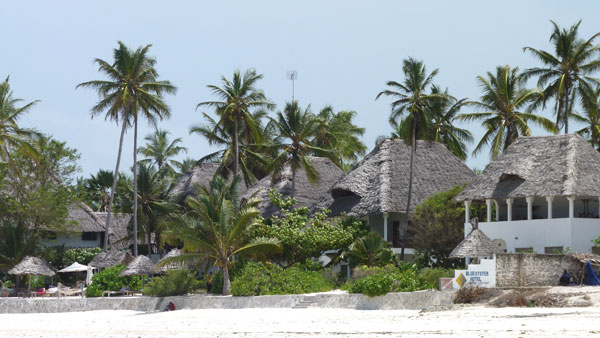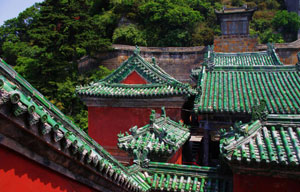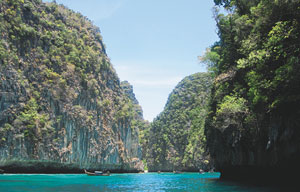Interlude in Zanzibar
 |
|
Traditional whitewashed coral limestone buildings loom over the streets in the Stone Town. |
 |
|
Stone Town is rich with Swahili architecture. |
Tourists also have the chance to gain insight into Zanzibar's past, with self-guided or guided visits to well-interpreted monuments, old slave market sites and a chilling former slave dungeon. The dank, claustrophobic underground cells are sobering, many still left with the desperate scratch marks made by former inhabitants.
Zanzibar gained independence from Britain, merged with Tanganyika in 1964 to form the United Republic of Tanzania and has seen the number of foreign visitors explode since the early 1990s, to the point that tourism has replaced spices as the islands' main industry.
The overwhelming majority of tourists in Zanzibar come from Europe, but in February 2011 Tanzania rolled out a new 'think Asia' tourism promotion blitz, targeting potential visitors from both emerging and established Asian economies.
"We are generously throwing our gates open for Indians, Chinese and Japanese tourists," Aloyce Nzuki, managing director of the Tanzania Tourist Board told eTurboNews when the promotion began.
With plenty of attractions both natural and cultural as well as opportunity for both blissfully passive beach lounging and more active snorkelling, hikes in monkey-filled national parks or shopping in the old town, there certainly is a little of something for everybody in Zanzibar.
It's an ideal place to kick back for a few days, or even a few weeks, after taking in mainland Tanzania's more famous attractions.
The rigors of 4 am safari drives in the Serengeti or climbing Kilimanjaro leave many travelers feeling the need for a bit of a vacation from their vacation. Zanzibar is the perfect tonic.
While all the beaches on Zanzibar's main island (Unguja) are gorgeous, most cater to different crowds. Those on the northwest appeal to younger, budget-oriented backpackers looking for a party.
The upscale resorts on the northeast coast target luxury tourists. And the boutique guesthouses on the southeast coast are a hit with those looking for a quiet, mid-range retreat.
Jambiani village in the southwest is home to a locally run ecotourism organization that offers a cultural village tour, on which you can visit a local school, watch seaweed farming and make your own coconut-husk fiber ropes.
Snorkeling and scuba diving off Zanzibar are world-class, with multitudes of vibrant fish swimming just under the turquoise ocean surface.
If you prefer to stay above the waves, you can catch a ride on a traditional dhow.

Tourists can also hike through Jozani Forest National Park, where many are rewarded with red colobus monkey spottings. On the aptly named Turtle Island (also called Prison Island), off the west side of Unguja, you can visit a group of giant tortoises.
Visitors would be wise to spend a few days in Stone Town as well as time on the beach.
Stone Town is great for aimlessly wandering, admiring the exquisite Swahili architecture (particularly the carved Zanzibari doors), perusing the many shops or following in the footsteps of legendary explorers such as David Livingstone and Henry Morton Stanley.
No visit to Zanzibar is complete without sampling the delicious local cuisine.
Fantastic coconut-based Swahili curries, usually seafood-based, are great fare at both local beach shacks and some of the boutique guesthouses and are washed down perfectly with a cup of spicy Swahili tea.
But the best place to sample local snacks is in the night market, which gets going every evening just after dark. Rows of local vendors proffer whatever the fishermen have caught that afternoon - fried, roasted, spiced and prepared the Zanzibari way.

















